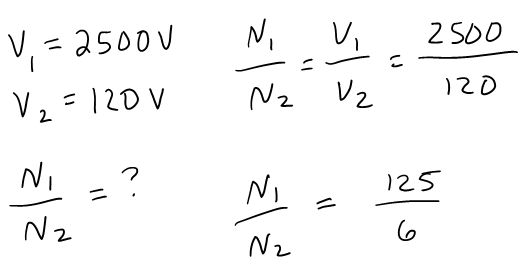Another excellent source about electro-dynamics can be found here.
Introduction
Motors transform electrical energy into mechanical energy. Electric generators do the opposite. They transform mechanical energy into electrical energy. Generators are used to create the electricity that powers all of the appliances in your home. In this section you will learn how generators produce electricity.
Electromagnetic Induction
An electric current in a wire creates a magnetic field. The reverse is also true. If you move a magnet near a coil of wire, an electric current (or voltage) is induced in the coil. The word “induce” means “to cause to happen.” The process of using a moving magnet to create electric current or voltage is called electromagnetic induction. A moving magnet creates a voltage across a wire which in turn induces electric current to flow through a wire.
The induced voltage or current depends on how fast the magnetic field through the coil changes. Michael Faraday (1791-1867), an English physicist and chemist, was first to explain it. He experimented with moving magnets and coils and discovered Faraday’s law of induction. Faraday’s law says the induced voltage is proportional to the rate of change of the magnetic field through the coil. If the magnetic field does not change, no voltage is produced even if the field is very strong.
http://www.youtube.com/watch?v=BKXw2OjuPpY
The voltage, V, (sometimes called an e.m.f. - electromotive force) depends upon three varaibles:
- the strength of the magnetic field, B
- the length of the wire (most often wrapped into a coil), l
- the relative speed between the wire and magnetic field, v
Here is the formula for calculating the electromotive force (voltage) induced in a moving conductor passing through a magnetic field.
V=Blv
Example - Fielding the Question
a) What voltgage is created across the wire?
b) What current flows if the resistance in the circuit is 150Ω?
a) What voltgage is created across the wire?
b) What current flows if the resistance in the circuit is 150Ω?
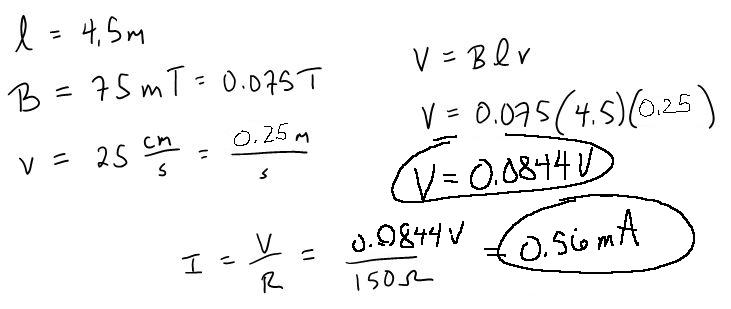
Alternating Current (AC)
As a magnet is pushed through a coil of wire, current is induced to flow in one direction. As the magnet is pulled out, the current flows in the other direction. Whether a moving magnet, or a moving coil, the wire experiences a changing magnetic field and the current changes direction - it alternates and creates what is called alternating current (AC).
You can use the left-hand palm rule for finding the direction of (mathematical) of the current induced in a wire moved perpendicularly through a magnetic field.
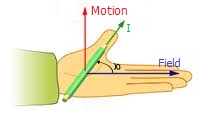
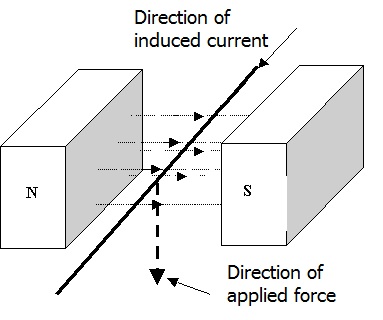
left hand palm rule for finding the direction of induced current
Example - Lucky Horseshoe

Using the left-hand-palm-rule, we find that the current flows to the left.
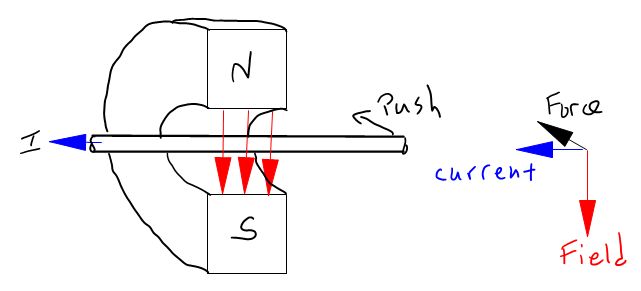
The electrical energy created by a generator is not created from nothing. Energy must continually be supplied to keep the rotating coil (or magnetic disk) turning. In hydroelectric generator, falling water turns a turbine which spins the generator and generates electricity. Windmills can generate electricity in a similar way. Other power plants use gas, oil, or coal to heat steam to high pressures. The steam then spins turbines that convert the chemical energy stored in the fuels into electrical energy.
Notice the alternating current created in animated generater below. Some energy source is forcing the coil to turn through the fields of the permanent magents. As the wire moves first one way then the other through the magnetic field, the current moves first one way then the other through the wire.
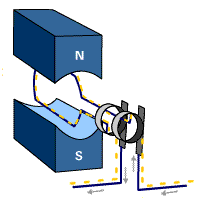
AC generator
The electricity that reaches your house is AC electricity.
Transformers
From the perspective of physics, it makes sense to distribute electricity from a generator to homes using high voltage. For example, the main power lines on a city street carry AC current at 13,800 volts. Since power is current times voltage, each amp of current provides 13,800 watts of power. The problem is that you would not want your wall outlets to be at 13,800 volts! With a voltage this high, it would be dangerous to even plug in your appliances.
The voltage in your wall outlet is 120 volts. A transformer steps down the high voltage from the main power lines to the low voltage your appliances use. Transformers are useful because they efficiently change voltage and current with very little loss of power. A transformer can take one amp at 13,800 volts from the power lines outside and convert it to 115 amps at 120 volts. The total electrical power remains the same because 13,800 V × 1 A = 120 V × 115 A.
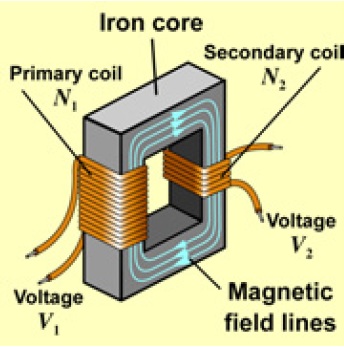 A transformer uses electromagnetic induction, similar to a generator. The diagram shows what a transformer looks like inside its protective box. You may have seen one inside a doorbell or an AC adapter. The two coils are called the primary and secondary coils. The input to the transformer is connected to the primary coil. The output of the transformer is connected to the secondary coil. The two coils are wound around an iron core. The core concentrates the magnetic field lines through the centers of the coils.
A transformer uses electromagnetic induction, similar to a generator. The diagram shows what a transformer looks like inside its protective box. You may have seen one inside a doorbell or an AC adapter. The two coils are called the primary and secondary coils. The input to the transformer is connected to the primary coil. The output of the transformer is connected to the secondary coil. The two coils are wound around an iron core. The core concentrates the magnetic field lines through the centers of the coils.
Consider the transformer between the outside power lines and your house:
- The primary coil is connected to outside power lines. Current in the primary coil creates a magnetic field through the secondary coil.
- The current in the primary coil changes constantly because it is alternating current.
- As the current changes, so does the strength and direction of the magnetic field through the secondary coil.
- The changing magnetic field through the secondary coil induces current in the secondary coil. The secondary coil connects to your home’s wiring.
There are two mathematial models that we use to model the behavior of a transformer. The first comes from the law of conservation of energy - that the power across the transformer must be constant.
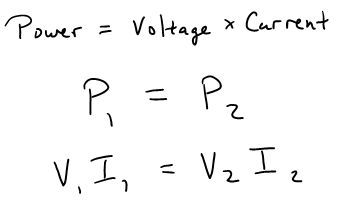
The second mathematical model allows us to find how the voltage changes between the primary and secondary sides of the transformer.
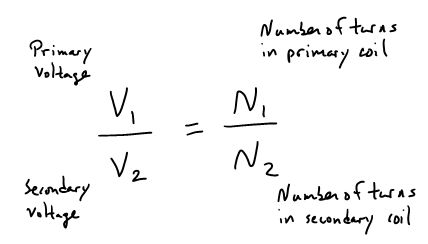
Example - Voltimus Prime
